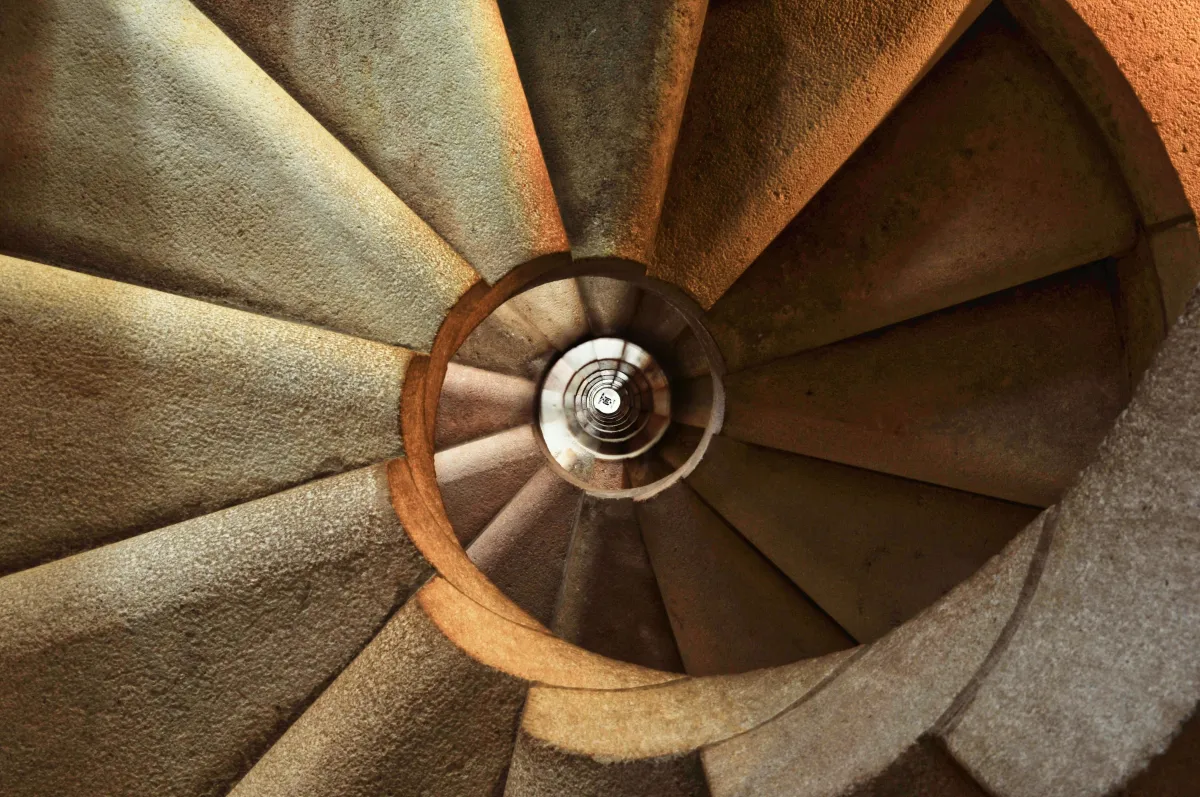

Blog

Healing in Spirals: Embracing Circular Design for a Better World
In nature and design, healing and growth often follow a spiral pattern rather than a straight, linear path. This concept is not only integral to understanding the natural world but also crucial for building a more sustainable and equitable future.
I recently reflected on a poignant discussion brought up by Acevedo Butcher, which highlighted the profound grief felt by Gen-Z and Gen-Alpha. Many of these young people grapple with a complex mix of emotions—anger, sadness, and frustration—about the state of the world they have inherited. They face challenges that previous generations have not fully addressed, from climate change to economic inequality.
This intergenerational dialogue has led me to think deeply about how we approach healing, design, and the future of work. Just as nature operates in spirals—seasons cycle through, growth unfolds in concentric rings, and ecosystems evolve—we too must embrace non-linear approaches to create a better world.
Spiral Healing and Design
When we talk about healing, it's important to recognize that it doesn't happen in a straight line. Instead, it involves revisiting and evolving our understanding and actions over time. This cyclical process allows us to learn from past experiences, adapt, and make more informed decisions as we progress. The same applies to design and sustainability.
One key lesson from recent discussions is the importance of moving away from a linear economy—a model where products are created, used, and discarded—to a more circular approach. In a linear system, resources are depleted, and waste accumulates. In contrast, a circular economy emphasizes recycling, reusing, and regenerating materials. This approach mirrors the natural spiral, where waste from one process becomes a resource for another, fostering a more sustainable system.
A Personal Journey: From Banking to Post Growth Design
My own path has been a journey of transformation and discovery. Starting my career in banking, I initially focused on traditional financial models that often emphasized growth and profit in a linear fashion. However, this experience gradually led me to question and explore alternative approaches to design and sustainability.
Through insightful guidance my mentors, I discovered Post Growth Design—a framework that challenges conventional notions of endless economic growth and promotes sustainability and well-being within ecological limits. Their work illuminated the concept of designing systems that prioritize balance, regeneration, and holistic thinking, aligning perfectly with the spiral model of growth and healing.
Their influence has been pivotal in reshaping my perspective. Post Growth Design advocates for systems that operate within ecological constraints and foster long-term resilience. This approach aligns with the spiral nature of healing and growth, emphasizing continuous improvement and adaptation rather than linear progression.
Redefining Design in Hiring and the Future of Work
As we move towards a more sustainable and circular world, we must also reconsider our approach to hiring talent and designing the future of work. This involves thinking beyond traditional, linear job structures and embracing more holistic and dynamic models.
Embracing Diverse Skills and Perspectives: Just as circular design promotes diverse uses of materials, hiring should focus on a range of skills and perspectives. Seek candidates with varied experiences and backgrounds, as they bring unique insights and innovative solutions. This approach enriches the workplace and contributes to more comprehensive problem-solving.
Prioritizing Lifelong Learning and Adaptability: In a spiral model, growth is continuous and iterative. Similarly, employees should be encouraged to engage in lifelong learning and adapt to evolving roles. Design work environments that support ongoing development and flexibility, allowing talent to grow and pivot as needed.
Fostering Collaborative and Inclusive Work Environments: Spiral growth involves interconnected layers and collaborative processes. Apply this to the workplace by creating inclusive and collaborative environments where ideas can flow freely, and diverse voices are valued. This encourages creativity and drives collective progress.
Designing for Well-being and Sustainability: Just as circular design considers the entire lifecycle of products, future work environments should be designed with employee well-being and environmental impact in mind. Implement practices that promote work-life balance, mental health, and sustainability, aligning with broader circular principles.
Encouraging Innovation and Responsiveness: A spiral approach is inherently adaptive, allowing for constant evolution. Foster a culture of innovation and responsiveness within organizations. Encourage employees to experiment, iterate, and adapt to changing circumstances, which is crucial for thriving in a dynamic world.
Building a Better World
To build a better world, we must adopt a design philosophy that aligns with the spiral nature of healing and growth. This means:
Embracing Circular Principles: Design products, systems, and work environments that prioritize sustainability, recycling, and regeneration. Aim for a circular flow where waste is minimized and resources are continually reused.
Encouraging Ongoing Dialogue: Foster conversations across generations and sectors to understand and address shared challenges. By listening and learning from each other, we can develop more effective and inclusive solutions.
Adapting and Evolving: Accept that progress is not linear. Be prepared to revisit and revise strategies as we learn and grow, allowing for a more adaptive and resilient approach to design, work, and healing.
As we navigate these challenging times, let’s remember the natural cycles of growth and transformation. By aligning our actions with the spiral patterns of nature, we can foster healing, sustainability, and a brighter future for all.

